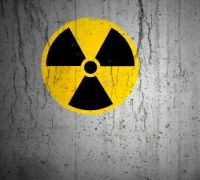

Mayor of Poland's third biggest city, Krakow, is taking steps to protect its citizens from increasing electromagnetic "smog" that comes from wifi, mobile phones, Bluetooth and other devices that produce non-ionising radiation.
Krakow's Mayor, prof. Jacek Majchrowski, is the World's first authority to tackle an electromagnetic pollution described as an environmental issue. This campaign follows work on air pollution, and this initiative encourages citizens to participate and discuss the growing issue of "smog" from electromagnetic fields. He is also initiating the provision of metres to detect radio-frequency and extremely low frequency to provide objective data for the public on the levels of exposure.
The Institute of Electrical and Electronics Engineers and many national governments have established safety limits for exposure to various frequencies of electromagnetic energy, mainly based on guidelines to guard against thermal damage. Heavy doses of certain radiation, such as X-rays from CT-scans can be dangerous to health, but there is currently no consistent evidence that low levels non-ionizing radiation from mobile phones and wifi increases cancer risk, which was one of the reasons prof. Majchrowski went forward with his initiative.
Cedrec's take
Krakow is one of the most polluted cities in Europe, not from electromagnetic "smog", but the real "smog" that comes from the high concentrations of particulate matter (PM) in the ambient air in the city, sourced from domestic solid fuel burning (coal and timber), heavy industry and road traffic. Pollution from PM10 and PM2,5, in particular, is linked to being the main cause of asthma, lung cancer, respiratory diseases and cardiovascular problems and this finding has been heavily supported by scientists.
Is it bad?
According to the air pollution monitoring station, the problem is very bad, especially in the winter periods. For example, figures show, that in 2012 residents of one of the Krakow's districts could breathe safely only three days of the month, while in the city centre there was only one day of safe air. In November 2015 PM10 levels reached 281,2 micrograms per cubic meter, which is over 540% of "normal" levels. PM pollution is not the only issue, the city also has a problem of Nitrogen Dioxide and Benzo(a)pyrene, which is highly carcinogenic. Although, seeing prof. Majchrowski's actions, these problems are not as important to him as the electromagnetic "pollution" and very little has been done to improve the air quality of the city.